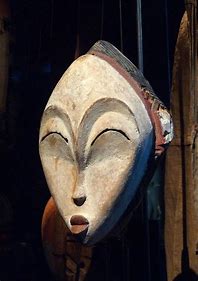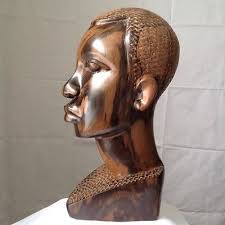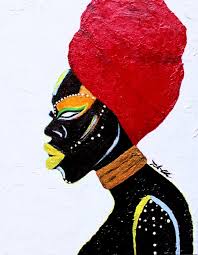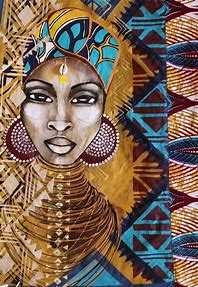Major cancer breakthrough as world-first blood test can detect 50 types of disease













Major cancer breakthrough as world-first blood test can detect 50 types of disease
Ablood test which aims to detect more than 50 types of cancer can speed up diagnosis for patients with worrying symptoms, a world-first trial has shown.
It could become a valuable tool to help GPs quickly identify people likely to have cancer - and rule out those who do not, the NHS study found. The Galleri test searches for fragments of DNA shed by tumours and predicts where in the body the cancer originated.
A total of 5,461 patients in England and Wales who had been referred to hospital by their GP provided blood samples for the trial. They then continued through the usual diagnostic process.
The test flagged 323 patients as positive for cancer. Of those, 244 had a diagnosis confirmed and 79 received the all-clear.
Overall, Galleri correctly identified two-thirds of patients with cancer and correctly ruled out cancer in 98 percent of people who did not have it.
Study leader Brian Nicholson, of Oxford University's Nuffield Department of Primary Care Health Sciences, said: "These results are exciting as they show us where in the diagnostic pathway the test might be placed to be most likely to improve the diagnostic process.
"A positive result could help to direct investigations onto particular cancers when there could be uncertainty as symptoms are non-specific and could point to many cancers.
"A negative test, if used in primary care before the decision to refer is made, could reduce referrals by reassuring cancer is unlikely."
The first large-scale evaluation of Galleri was supported by the NHS, the National Institute for Health and Care Research (NIHR) and NIHR Oxford Biomedical Research Centre. Patients who took part had non-specific symptoms that could be linked to cancer and had been referred for urgent scans or other diagnostic checks.
The most common symptoms were unexpected weight loss (24 percent), change in bowel habits (22 percent), post-menopausal bleeding (16 percent), rectal bleeding (16 percent) and abdominal pain (15 per cent).
The top cancers diagnosed were bowel (37 percent), lung (22 percent), uterine (8 percent), oesophago-gastric (6 percent) and ovarian (4 percent).
Co-investigator Professor Mark Middleton, an expert in experimental cancer medicine at Oxford University, said more studies would be needed.
But he added: "We see potential for identifying people going to see their GP who are currently not referred urgently to investigate cancer - the lower pre-test probability people - who do need testing."
Professor Lawrence Young, an expert in molecular oncology at Warwick University, said: "This is an important study that shows we are edging towards an era when blood testing for cancer, alongside other tests of symptomatic patients, could really impact early diagnosis and significantly improve clinical outcome."
However, he warned that the test's lower accuracy when flagging cancers "remains an issue". He explained: "The real challenge is to diagnose those cancers that are difficult to detect - such as lung and pancreas - and use a positive blood test to instigate other investigations such as imaging.
"To really trust that a negative result on blood testing means no cancer will require more studies."
Another NHS trial involving 140,000 volunteers aged 50 to 77 is investigating whether the test can detect cancers before symptoms emerge. It is hoped that Galleri, which has been developed by US company Grail, could one day be used to screen higher risk patients such as those aged over 50.
Professor Helen McShane, director of the NIHR Oxford Biomedical Research Centre, said: "We are committed to diagnosing cancers earlier, when they can be cured, and this study is an important step on that journey."
NHS national director for cancer Professor Peter Johnson said: "This study is the first step in testing a new way to identify cancer as quickly as possible, being pioneered by the NHS. Earlier detection of cancer is vital and this test could help us to catch more cancers at an earlier stage and help save thousands of lives. It also shows once again that the NHS is at the forefront of cutting edge, innovative technology."
Dr Richard Lee, consultant physician in respiratory medicine at the Royal Marsden Hospital in London, said multi-cancer early detection tests "could help to enable quicker diagnostic testing in those who are deemed to be at high risk".
Dr Lee, team leader for the early diagnosis and detection team at The Institute of Cancer Research, London, added: "Further research studies are needed to better understand where these tests sit alongside existing screening offerings and early diagnosis of those with worrying symptoms.
"These remain a research test and are not ready for routine clinical use, but could be a very important tool for cancer diagnosis in the future."
The findings of the Symplify trial were published in The Lancet Oncology journal.
Story by Hanna Geissler - daily express Health Editor in Chicago
Everything you need to know about mangosteen
Everything you need to know about mangosteen
Mangosteen is a small purple fruit that grows in Southeast Asia. Mangosteen is a good source of nutrients. However, more research into the health benefits of mangosteen is necessary.
What is a mangosteen?
MangosteenTrusted Source is a small, purple fruit from Southeast Asia. It has a hard outer skin and sweet, white, juicy flesh. People have described its taste as a mix of lychee, peach, strawberry, and pineapple.
Farmers tend to grow mangosteen in Indonesia, Malaysia, Sri Lanka, the Philippines, and Thailand. In these countries, people consume it as:
- fruit
- juice
- traditional medicine
Fresh mangosteen is hard to find in the United States for two reasons.
First, mangosteen trees need a fully tropical climate and lots of time to grow. Small farms in Hawaii and Puerto Rico, started in the 1990s, are only now starting to bear fruit.
Second, fresh mangosteen can harbor quarantine pests or non-U.S. native bugs that could threaten the ecosystem. It means mangosteen importers must sterilize the fruit before it enters the country. This sometimes affects the quality, taste, or shelf life.
Benefits of mangosteen
Mangosteen has many benefits. It contains a range of compounds and substances that are good for human health.
The benefits of mangosteen include:
Highly nutritious
According to the U.S. Department of Agriculture, all fruits provide nutrients that are vital for good health.
One cup of drained, canned mangosteen contains:Trusted Source
- 143 kcal
- 35.1g of carbohydrate
- 3.53g of dietary fiber
- 23.5mg of calcium
- 94.1mg of potassium
- 5.68mg of vitamin C
Most fruits, including mangosteen, are low in fat, sodium, and calories, helping people maintain a moderate weight. They are also free from cholesterol, which can contribute to chronic conditions such as heart disease and type 2 diabetes.
Fruit is also a good source of nutrients that people in the U.S. often lack, such as:
- potassium, a mineral needed to help maintain healthy blood pressure
- dietary fiber, which helps people maintain a healthy gut
- vitamin C, which helps the body to heal cuts and wounds and to keep teeth and gums healthy
Contains antioxidants
Antioxidants fight free radicals or harmful substances that can build up inside the body. Free radicals can contribute to health problems including:
Studies have suggested that mangosteen contains antioxidants. One study from 2015Trusted Source asked 30 people to drink a mangosteen-based beverage every day for 30 days. Researchers compared their blood to that of 30 people who had consumed a non-mangosteen-based drink or placebo.
At the end of the 30 days, the mangosteen group had 15%Trusted Source more antioxidants in their bloodstream than the placebo group.
Anti-inflammatory
Inflammation is a normal part of the immune system. It is the body’s way of removing foreign substances, like bacteria, viruses, or chemicals.
Sometimes, inflammation happens unnecessarily. Other times, it continues after the body has removed the threat. Doctors call this chronic inflammation. It can contribute to health problems including:
- cancer
- heart disease
- diabetes
- arthritis
- depression
- Alzheimer’s disease
In the 2015 study outlined above, scientists found that mangosteen may also act as an anti-inflammatory. They concluded this by measuring the C-reactive protein, a substance that signals inflammation levels. Over the 30 days of the study, levels of this protein in the mangosteen group reduced by an average of 46%Trusted Source.
Medicinal properties
Some medicines include mangosteen as an ingredient, including:
- metratrim, a medicine that also contains Sphaeranthus indicus and may help people who have obesity or overweight lose weight
- a gel with 4% mangosteen can help with loose teeth and bleeding in people with serious gum disease, or periodontitis
- some moisturizers for oily skin
Should I worry about my clicking joints – and stop cracking my knuckles?













Should I worry about my clicking joints – and stop cracking my knuckles?
When Donald Unger was a child, his mother and several aunts – and later his mother-in-law – told him that cracking his knuckles would lead to arthritis. Rather than stop (or at least do it less obtrusively), Unger embarked on his own experimental programme: for 50 years, he cracked the knuckles of his left hand at least twice a day, leaving his right-hand knuckles to crack spontaneously, or not at all. After 36,500 cracks or so, the results were clear, at least for Unger, who had become a doctor and published his findings in the journal Arthritis and Rheumatism. “There was no arthritis in either hand, and no apparent differences between the two hands,” he concluded. If you can’t applaud Unger for his half-century of dedication, you have to at least respect him for not calling it a “cracking” result.
Still, voluntary knuckle-cracking is one thing – what about all the other clicks, crunches and crackles that seem to increase in tempo as you start to age? Generally, it’s pretty good news. “Lots of people have joints that click from time to time, and that’s completely normal,” says Claire Speer, a physiotherapist and “musculoskeletal champion” for the charity Versus Arthritis. “I myself often notice a sense of relief when my back or shoulder clicks after stretching or a massage, when everything just feels like it moves a little easier.”
What causes all the noise in the first place? A 2015 study based on MRI scans suggests that the satisfying/disgusting pop of a knuckle crack seems to come from small bubbles appearing in the synovial fluid that surrounds and lubricates the joint between two bones. When the joint is stretched, the pressure in the capsule of connective tissue surrounding the joint drops, meaning that these bubbles briefly appear. It’s believed that their appearance is what makes the “crack” – as they collapse harmlessly back into the fluid over the next 20 minutes or so, explaining the cool-off period even veteran crackers have to respect. Some knuckles, it is theorised, are too loose or too tight to crack, leaving those in the Goldilocks zone of cracking to annoy everyone else.
The main concern about knuckle-cracking, at least for the authors of one frequently cited paper from 1990, is that it leads to “the rapid release of energy in the form of sudden vibratory energy, much like the forces responsible for the destruction of hydraulic blades and ship propellers”. And while the 1990 researchers concluded that there was no increased evidence of arthritis among knuckle crackers, they were “more likely to have hand swelling and lower grip strength”, and the practice therefore “results in functional hand impairment”. That finding, however, has since been contradicted in a 2016 study that found no correlation between cracking and weakened grip – and the older study might have indicated correlation more than causation, as cracking was also associated with smoking and drinking.
So when is it time to worry? “If you get pain, swelling or deformity in a clicky joint then you should get it checked out as this may be a sign of injury or arthritis in the joint,” says Speer. “Likewise, if it is clicking, popping or crunching with every movement it is worth getting it checked by a health professional, such as a physiotherapist, to make sure the joint and its surrounding soft tissue are functioning properly.”
It’s also worth having it examined if there is an immediate change to the shape of the joint – especially at the kneecap or shoulder. “This can indicate a joint is partly dislocating before returning to its proper position,” says Speer. “Again, a physiotherapist would be a good person to assess that.”
One final note of caution: you can always overdo it. In 1999, the American Journal of Orthopedics published an article by Peter Chan, a hand surgeon: Consequences of Knuckle Cracking: A Report of Two Acute Injuries. In it, he describes two patients who were so keen to hear the pop that they sprained their fingers doing it. Maybe Donald Unger’s mum had a point after all.
Story by Joel Snape : The Guardian:
The Children Of the Sun-Asia-4














The Children Of the Sun-Asia-4
A man who can create armies out of merceneries, marches them thousands of miles to the foot of the Alps, nor pauses when he faces the forbidden dangers. In spite of the bitter cold, the chilling winds and the irresistible sweep of avalanches, his one cry was, "Beyond the Alps lay Italy!" Whether it was his lust for gain, the love of adventureor devotion to the magnetic African, the mercenary hordes of Africans, Libyans, Spaniards and Gauls suffered a thousand deaths and rallied on to a thousand more when they heard his great voice ring down the silent chasms, " Beyond the Alps lay Italy!"
The reward which comes to unalterable purpose came at last to these struggling soldiers of Hannibal and finally they stood upon the brink and gazed down into the valley of Po.
For fifteen years they and their leaders wandered at will, destroying army after army sent against them, and what if they did fail at last-did they not accomplish a feat unexampled by any army of the world? He was truly of the Lion's blood.
At the time when the United States was presented with a statue of Frederick the Great, the well known journalist, Ambrose Bierce, wrote with his accoustomed sarcasm and stinging truth, " The others are to be Alexander the Great, Ceasar and Napoleon, Hannibal, a greater soldier than any of them, is excluded-probably because of his African descent, though he may occupy a Jim Crow pedestal later." The only fear I have is that when the truth of history is known, the United States will Jim Crow the whole of ancient history, because it is nothing but a record of African achievement and glory.
It is a paradox that most mixed people of the world should claim itself a pure race and refrain from the miscegenation which was so universally practiced by its ancestors. I refer to the Jewish race. Of them Cheyne, the famous biblical scholar, says: "It was as little a nation of pure blood as any on earth, for it admitted persons of Aramean and Egyptian descent as well as Canaanitic, Hebrew and Arabic elements." To begin with, the Hebrew race and language are not paternally of Semetic origin.The original home of the people appears to have ben in regions round about Arabia, regions which have always been the strongholds of African races.
The Hebrews, themselves,claim that Abraham was their universal ancestor and came from Ur of the Chaldees, and this legend brings to our minds two things, firstly, that Chaldea was purely Cushite and secondly, that Abraham is also claimed an ancestor by a great many African tribes. The legend that Israel was in bondage under Egypt for five hundred years would presuppose that considerable mixture took place, but surely if it had not done so, it did so after the Israelites came to their promised land, Canaan.
Here was another nation almost purely African and among them the Hebrews made their home. On more than one occasion their chief God, Jahve, reprimanded them for associating too intimately with the black trash of the neighborhood.
Solomon, , whom records say was black, goes so far as to forsake the gods of Israel for the gods of Canaan and even built a temple to them. Moses and many other of the leading characters had black wives and what the greatest men did is but an index to what the others might have done.
In the third century, towards the close of the year 225, Dio Cassius, a Roman senator, is alluding to the Palestinian wars, says that besides the original Jews of Judea, " there are other men, who, although of a different race, have adopted the laws of the people."Further on he makes mention of the fact that a great proportion of the ancient Jews were the descendants of converted pagans, so it seems that their mixing proclivities were continued down to a very late period of their history.
In the third century, towards the close of the year 225, Dio Cassius, a Roman senator , is alluding to the Palestinian wars, says that besides the original Jews of Judea, " there are other men, who, although of a different race, have adopted the laws of the people."Further on he makes mention of the fact that a great proportion of the ancient Jews were the descendants of converted pagans, so it seems that their mixing proclivities were continued down to a very late period of their history.
The tribes of black Jews which are found in Pelestine, Persia, Australia, Malabar, fghanistan,Abyssinia, Arabia. and northern Africa, are all vexing questions and, what complicates the matter still more, these black jews insist that they are the original Jews and the others a bastard race.
"And Ishmael, the son of Abraham by his hand-maiden Hagar, went into the far country of Yemen and there took unto himself a wife, and from them descended the pure Arabian race". This is the ancestry claimed by the southern Arabians for their race and whether it be true or only a legend, they have contended for this ancestry throughout the centuries and to this day.
From the north came another people calling themselves Arabians. They were lighter in complexion then those of the south, and they called themselves the real Arabians. The Yemenites, from whom Ishmael chose his bride, were a black race akin to the Ethiopians, and the Arabs of the South were likewise black, and between the northern and the southern Arabians there broke out a hatred which they carried to the furthest ends of the worlds.
Even after the conquest of Spain precautions had to be taken against civil war by providing that the southern arabs settle in different district from the northern. Early in their national history two great dynasties were representative of the House of Rabia and the House of Mudar. They were the Umattads or northern Arabians, and the Abbasids, or southern Arabians.
The Abbasids were the black Arabs and their symbol throughout their national existence was a black banner. In early Arabian history the seat of the Umayyad dynasty was at Damascus and for a long period they ruled the whole of the northern Arabia unmolested, while the Abbasid ruled the south.
Reference: The Children Of The Sun[George Wells Parker
Articles - Most Read
- Home
- LIVER DIS-EASE AND GALL BLADDER DIS-EASE
- Contacts
- African Wholistics - Medicines, Machines and Ignorance
- African Wholistics -The Overlooked Revolution
- African Holistics - Seduced by Ignorance and Research
- The Children of the Sun-3
- Kidney Stones-African Holistic Health
- The Serpent and the RainBow-The Jaguar - 2
- PART ONE: DIS-EASE TREATMENT AND HEALTH-3
- 'Tortured' and shackled pupils freed from Nigerian Islamic school
- King Leopold's Ghost - Introduction
- PART ONE: DIS-EASE TREATMENT AND HEALTH-4
- PART ONE: DIS-EASE TREATMENT AND HEALTH-2
- PART ONE: DIS-EASE TREATMENT AND HEALTH-5
- African Wholistics - Medicine
- Menopause
- The Black Pharaohs Nubian Pharaohs of Ancient Egypt
- The Mystery System
- PART ONE: DIS-EASE TREATMENT AND HEALTH-6
Who's On Line?
We have 142 guests and no members online
Ad Agency Remote
Articles - Latest
- The Male G Spot Is Real—and It's the Secret to an Unbelievable Orgasm
- Herbs for Parasitic Infections
- Vaginal Care - From Pubes to Lubes: 8 Ways to Keep Your Vagina Happy
- 5 Negative Side Effects Of Anal Sex
- Your Herbs and Spices Might Contain Arsenic, Cadmium, and Lead
- Struggling COVID-19 Vaccines From AstraZeneca, BioNTech/Pfizer, Moderna Cut Incidence Of Arterial Thromboses That Cause Heart Attacks, Strokes, British Study Shows
- Cartilage comfort - Natural Solutions
- Stop Overthinking Now: 18 Ways to Control Your Mind Again
- Groundbreaking method profiles gene activity in the living brain
- Top 5 health benefits of quinoa
- Chromolaena odorata - Jackanna Bush
- Quickly Drain You Lymph System Using Theses Simple Techniques to Boost Immunity and Remove Toxins
- Doctors from Nigeria 'facing exploitation' in UK
- Amaranth, callaloo, bayam, chauli
- 9 Impressive Benefits of Horsetail
- Collagen The Age-Defying Secret Of The Stars + Popular Products in 2025
- Sarcopenia With Aging
- How to Travel as a Senior (20 Simple Tips)
- Everything you need to know about mangosteen




